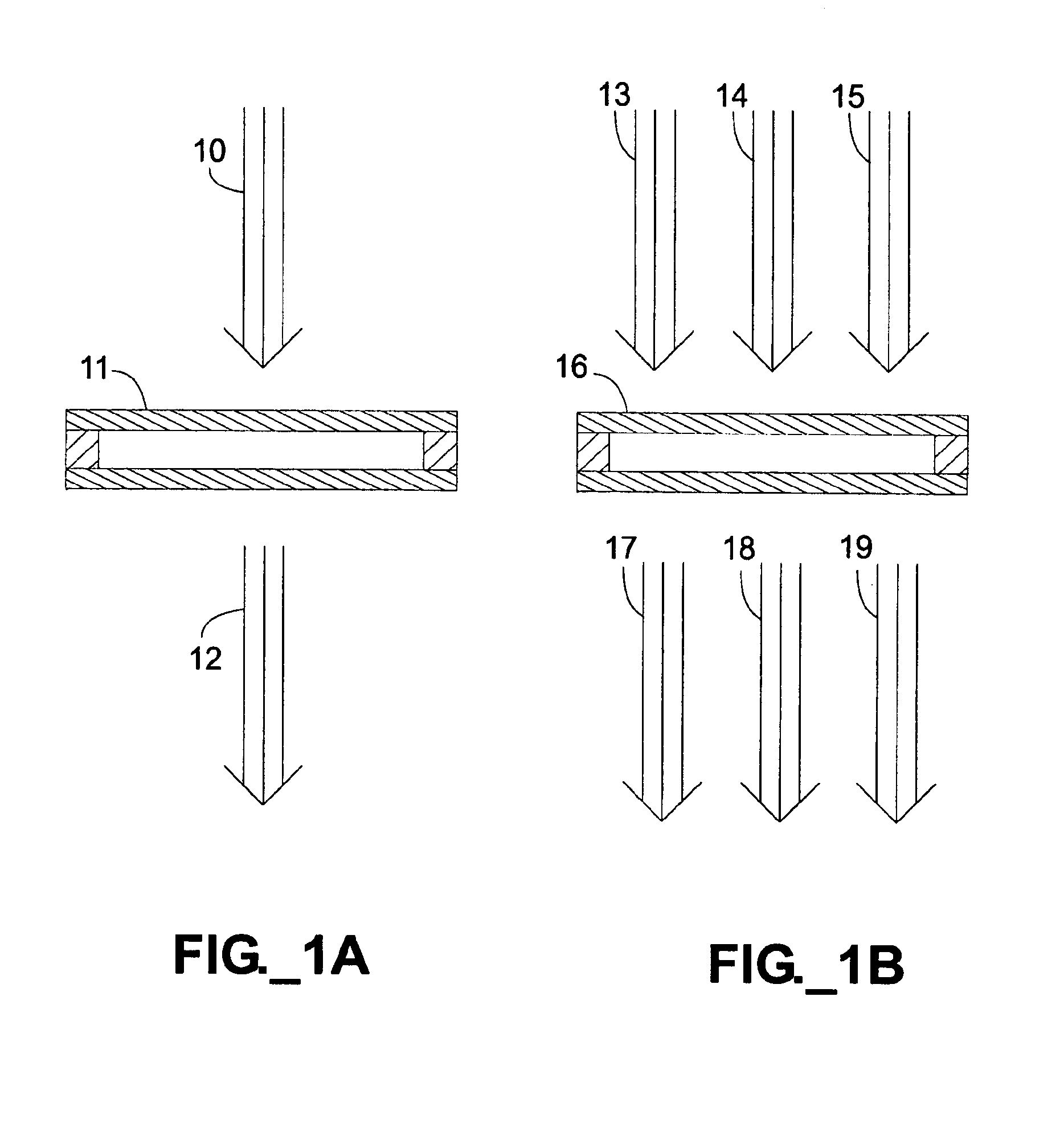Optical devices with fluidic systems
a technology of optical devices and fluidic systems, applied in the field of fluidic systems, can solve the problems of limiting the ability of filtering utility in very small increments, affecting the reliability of optical devices, and affecting the operation of optical devices
- Summary
- Abstract
- Description
- Claims
- Application Information
AI Technical Summary
Benefits of technology
Problems solved by technology
Method used
Image
Examples
Embodiment Construction
[0041]This invention describes fluidic devices that are capable of manipulating light. Incoming light may include various types of light, including but not limited to visible light, ultraviolet light, infrared light, far-IR light, and other frequencies of the electromagnetic spectrum. The light can be coherent or non-coherent, monochromatic or non-monochromatic, or collimated or diffuse. The source of such light can be a laser, a lamp, or other types of light sources.
[0042]In a preferred embodiment of the present invention, a network of fluidic channels is constructed so that the channels within the device can affect light that enters the device. In certain embodiments, the light is affected by the fluid that is passing through the device. In other embodiments, the fluid passing through the device has an indirect effect on the light. In another embodiment, the light is directly or indirectly affected by a stationary fluid. In certain embodiments, one or more fluids can be gases, liq...
PUM
 Login to View More
Login to View More Abstract
Description
Claims
Application Information
 Login to View More
Login to View More - R&D
- Intellectual Property
- Life Sciences
- Materials
- Tech Scout
- Unparalleled Data Quality
- Higher Quality Content
- 60% Fewer Hallucinations
Browse by: Latest US Patents, China's latest patents, Technical Efficacy Thesaurus, Application Domain, Technology Topic, Popular Technical Reports.
© 2025 PatSnap. All rights reserved.Legal|Privacy policy|Modern Slavery Act Transparency Statement|Sitemap|About US| Contact US: help@patsnap.com



